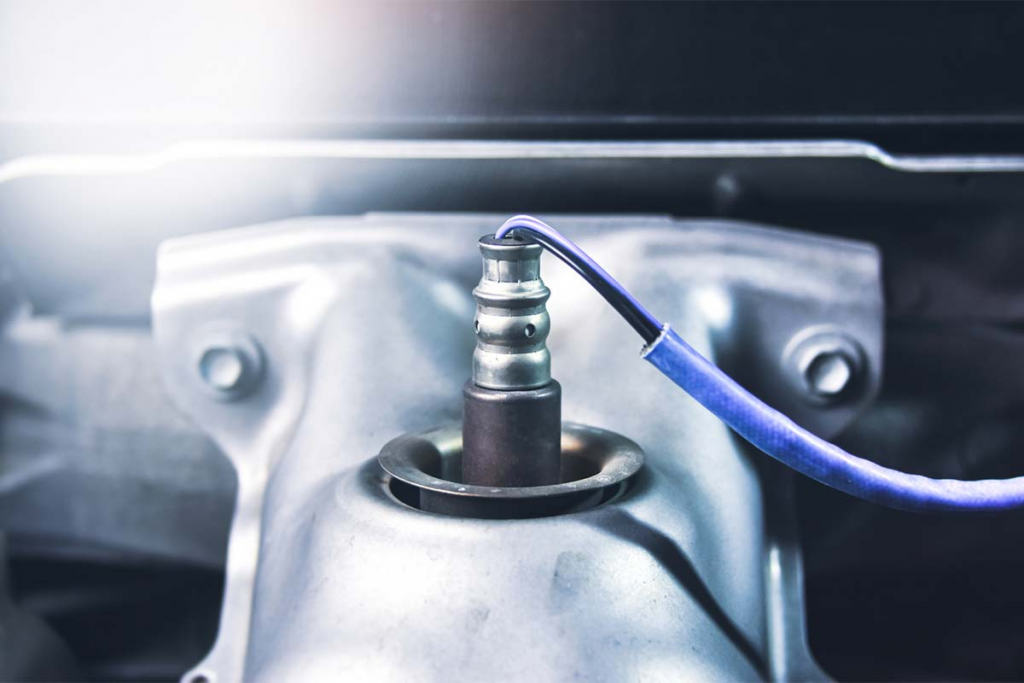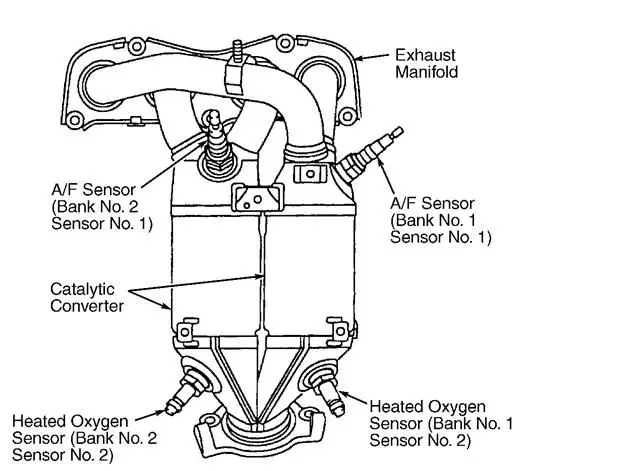You are a proud owner of the Toyota RAV4. However, you see a noticeable decline in fuel economy and performance lately.
Perhaps, you need to check or replace the oxygen sensor of the vehicle. But you are not sure how many and where are those sensors.
So, how many O2 sensors does a Toyota rav4 have?
The Toyota RAV4 model has a total of 4 O2 sensors. Two are in front of the catalytic converter. They are called air/fuel ratio sensors. The other two are after the converter. These are called O2 sensors. Bank 1 and 2, sensor 1 are upstream sensors. Bank 1 and 2, sensor 2 are downstream sensors.
This is just a brief overview. Continue reading the article to learn more about the matter.
Let’s start.
How Many O2 Sensors Are There in a Toyota RAV4?
Vehicles built after 1981 are required to have O2 sensors installed. A vehicle should have a minimum of two oxygen sensors. Some vehicles even have four oxygen sensors.
Toyota RAV4 is no exception. It has four sensors for oxygen. There are two of them in front of the catalytic converter. The other two are placed after the catalytic converter.
Prior to the catalytic converter, where two air/fuel ratio sensors are located (more costly).
The true oxygen sensors are the two that come later. The upstream and downstream nodes are linked to sensors 1 and 2, respectively.
Where Can I Locate The Toyota RAV4 O2 Sensor?
Locating the O2 sensors in your Toyota RAV4 can be tricky as you cannot see them easily. They are located deep below in the engine bay.
The sensors are located both before and after the catalytic converter. The Toyota RAV4 has a total of four of them. Before the catalytic converter, the two sensors are the air/fuel ratio sensor. These are more expensive.
After the catalytic converter, there are two other sensors downstream. These are the real O2 sensors. These are relatively less expensive than the air/fuel mixture sensor.

The upstream sensors are labeled bank 1 and bank 2, sensor 1. The downstream sensors are labeled bank 1 and bank 2, sensor 2.
Here is a diagram of the sensor locations for your convenience. Hopefully, this will make things easier.

How Do I Know If My Toyota RAV4 Has a Bad O2 Sensor?
If your Rav4’s oxygen sensor fails, the vehicle will usually report a diagnostic trouble code. Codes using oxygen sensors are many.
These codes correspond to the cylinder bank and downstream engine location.
The failure of an oxygen sensor might have disastrous consequences. So, it’s very important to look out for warning signs.
Some of the signs of an oxygen sensor that is failing can be frightening for drivers. They require prompt attention to prevent more serious engine damage or persistent performance concerns. These problems can be as bad as a gear grinding problem in your car.
Here are some common bad O2 sensor symptoms-
Decreased Engine Performance
A bad oxygen sensor will decrease the engine performance significantly. A bad oxygen sensor will give you stalls and misfires very frequently. You might also notice rough idling at times.
Among these, engine misfire is a critical issue and you will need to address it.
Low Fuel Economy
A malfunctioning O2 sensor is one of the potential causes of a decrease in fuel economy.
If there isn’t enough oxygen in the engine, the car will run rich and waste fuel. It may also be the cause of gas coming out of the exhaust.
Check Engine Light
When the “Check Engine” light comes on in your car, it’s time to take it to a mechanic.
Any issues with your car’s O2 sensor will be flagged by the onboard computer. The car will send a fault code and this can be diagnosed using specific tools.
Importance of Toyota RAV4 O2 Sensor
Cars today are made with a lot of complicated technology. They use information from a lot of different sensors.
This is needed for the best-operating conditions for the engine, fuel economy, and other crucial components.
Oxygen sensors are a crucial part of a diagnostic system for evaluating engine efficiency. For your vehicle’s optimal performance, oxygen sensors perform several roles.
Its primary function is to analyze your vehicle’s exhaust or emissions. Then it sends that data to the vehicle’s central processing unit (CPU).
The oxygen sensor is crucial to the efficient combustion process in your vehicle. It helps to determine the ideal ratio of fuel to oxygen.
A broken oxygen sensor can meddle with the timing of the engine and the exhaust system. Understanding the function of your car’s oxygen sensor will help you with any emerging problems.
Hence, the oxygen sensors are very important for your car’s performance. The cost of a RAV4 oxygen sensor is also high. It costs between $320 and $350 which is above average costs.
However, some basic upstream/downstream sensors can be pretty affordable.
Here are some of the budget Oxygen sensors for Toyota RAV 4-
- Oxygen O2 Sensor Upstream Compatible with Toyota Rav4 is the most ideal choice. It can be easily replaced with broken or faulty sensors.
- For a premium build, Vinrold O2 Oxygen Sensor Upstream leads the way. However, it’ll cost you a bit more than the other sensors.
- Marsflex Oxygen O2 Sensor Downstream Heated is another great replacement. However, do check the filament of your sensor before you make the purchase.
Finally, let’s get to know some maintenance tricks to keep your O2 sensors durable.
Tips & Tricks on Maintaining O2 Sensor
Here are some tips and tricks you can use to get a long-lasting and healthy oxygen sensor;
- Oxygen sensors perform optimally at temperatures of at least 350 degrees Fahrenheit (600 degrees Celsius). Because of this, it’s important to let the engine warm up before using it. The sensor can be warmed up by running the engine at about 2,500 rpm. Do this for two or three minutes.

- To check the sensor, you need to use an oscilloscope. Check it at both idle and approx. 2,500 rpm engine speed. It should be set between.800 and.900 volts (full rich) and.100 and.200 volts (full lean).
- How quickly the voltage changes is another O2 sensor health indicator. In a healthy sensor, the time between lean and rich states should be less than 300 milliseconds. A longer time period could suggest contamination or wear.
- You need to replace your O2 sensors every 100.000 miles. But do keep them on regular inspection.
- Always try to use good quality fuel. Using bad or contaminated fuel will clog the sensors and give bad fuel economy.
Hopefully, these facts about the Toyota RAV4 should prove useful.
Frequently Asked Questions (FAQs)
How Long Does It Take to Change Oxygen Sensors in Toyota RAV4?
If you are a competent technician, it will take no more than 30 minutes. However, there are occasions when an hour or more is required. On average, swapping out an O2 sensor will take you between 20 and 40 minutes. Make sure the replacement is done correctly whenever you do it.
Should I Clean My Toyota RAV4 Oxygen Sensors?
No, you should not clean the oxygen sensor. Despite what you may have read or heard, it is recommended that malfunctioning sensors be replaced. It would be a terrible idea to mess with the air-fuel ratio sensors. This incorporates the risk of ruining them in the process.
Do I Need a Special Tool to Remove the Oxygen Sensor of My Toyota RAV4?
No, you do not need a special tool to do the work. You do not need the stripped oxygen sensor removal tool. Although nothing beats the tool for the job. But it is not necessary to do so. You can remove the oxygen sensors with a regular ⅞ size wrench. It is that easy and simple.
Conclusion
That will be all from our side on how many o2 sensors does a Toyota rav4 have. Hopefully, now you know how many sensors are there and where they are.
Make sure you check your sensors every 10,000 miles and maintain them properly.
Have a good day.
- Is The Jeep Cherokee Frame or Unibody (Briefly Answered) - November 10, 2022
- Are Titan Wheel Spacers Good (The 360 Guidelines) - November 9, 2022
- FCW off Jeep (Is It Important for Your Car) - November 9, 2022

